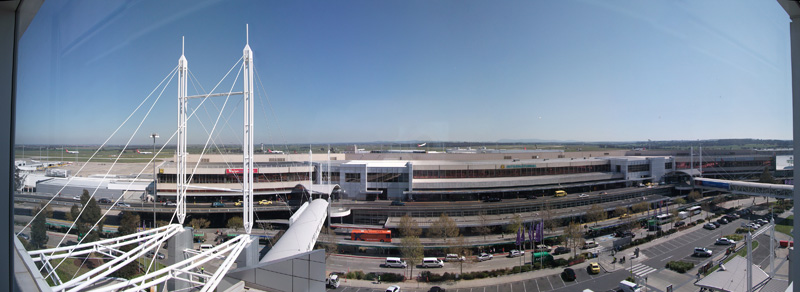ChronopanoramaPreviously known as Time Lapse PanoramaWritten by Paul BourkeThe term "chronopanorama" credited to Peter Morse August 2010, Updated 2014
Panoramic photography with a single camera typically involves capturing multiple images in an arc and stitching/blending them together. If the stitching is based upon feature recognition then the final panorama image can appear seamless. For best results one is usually hoping for a stationary scene, at least over the time period that the images are being captured. The following 5 images are a selection from the 9 that were used to create example 1 below.
A fun variation on this is to intentionally take the photographs as some, usually spatially isolated, object is moving in the scene. If the speed of the moving object and the duration and frequency of the photographs are synchronised then the result is a combined time lapse and panoramic image. The moving object then appears at multiple positions (time) in the panorama.  Melbourne Airport, from the Hilton Hotel
Further examples are given below, it is likely that the higher resolution version (click on image) will be required to see the effect. The trick is an understanding of the panorama stitching software being used, the ideal image overlap width, and synchronising the moving object and image capture to avoid the object of interest being blended out of the final panorama. But generally feature points will not be found near the moving objects and so their influence on the final image is only through blending.  Campo Santa Margherita, Venice
 Cape Gregory, Western Australia. 2014






|




